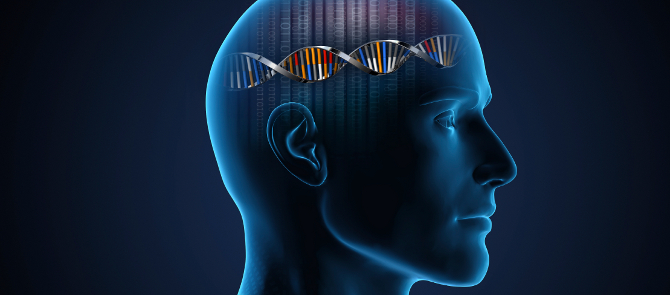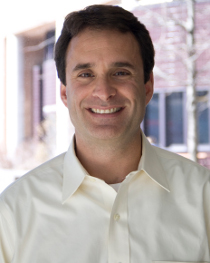How Epigenetics Could Improve Your Cancer Treatment

The human genome is often touted as the blueprint for the body. It's what helps make you, you. Many may also say that genomic understanding has provided the blueprint for modern cancer research. Yet, while genetic mutations can drive cancer development or increase your risk for malignancy, they are only one of the many factors at play. Today, how genes are stored in cells is swiftly gaining the attention of more and more cancer researchers. Subtle differences in cells affect how they switch genes on and off.

"Every cell in our body has the same DNA and the same genes. So how do they [cells] manifest in such different ways?" asks Bradley Bernstein, MD, PhD, one of the 2015 recipients of a prestigious American Cancer Society Research Professor grant. "The DNA in genes wrap up [or is stored away] in each cell in a different way. They wrap up in a way to turn on just the genes that are needed."
In other words, a liver cell will switch on genes needed for metabolism, but turn off other genes. A neuron will turn on a neurotransmitter gene, and so on. Scientists refer to this process as the "differential regulation of the genes." It's a normal but incredibly important process that helps your genes work the right way. The body has exquisite regulations to control it. If the process is disrupted, it can cause the gene to malfunction or fuel cancer growth.
Hardware vs. Software
The science of how differences in cells turn genes on or off is called epigenetics.
"There's genetics, where a difference in the DNA sequence might give you a trait, and then there's epigenetics on top of that. It's like the genome is the hardware and epigenetics is the software," adds Bernstein, a professor of pathology at Massachusetts General Hospital and Harvard Medical School.
"A gene is simply a long string of DNA wrapped up around little spools inside cells." says Bernstein. Epigenetics researchers like Bernstein want to understand how these spools are unraveled or rewrapped in a precisely orchestrated way that allows genes to be accessed and turned on. If it's wrapped too tightly, the body can't read it.
"It's about understanding how those processes become deranged and how to fix them," he says. "If you wanted to read something that was wrapped around a spool, you'd loosen the spool to read it. If you wanted to make sure it was never read and lock it away, you'd tighten the spool."
Honing in on Brain Cancer
Today, more powerful gene sequencing tools and computational models are giving Bernstein and others a better look at exactly how genes wrap up inside cells. Bernstein's research goal is to better understand the mechanisms that control the body's fundamental epigenetic process and investigate why and how they may become disrupted. Epigenetic dysregulation is ubiquitous across cancer, he says.
"What we've learned over the last several years is that, especially in all cancers, these mechanisms are disrupted. For example, the mechanism that tells a blood cell to stay a blood cell gets disrupted in leukemia. That blood cell forgets what it should do, and it starts turning on the wrong genes, causing a tumor."
With the help of his American Cancer Society grant, Bernstein is now using samples from patient's tumors to understand how normal epigenetic controls are disrupted in glioblastoma tumors as the person is going through treatment. Considerable research suggests that the study of epigenetics provides an important approach to tackling this common and aggressive type of brain cancer. Some of the initial lesions that lead to the tumors clearly disrupt the epigenetic controls in the cells.
"Within a tumor there are a lot of tumor cells. Existing therapies are, in the best case, getting 99% of those cells. But the other 1% of cells is the problem and is coming back in relapse," Bernstein explains. "So we really need to understand what is different with that 1%. In a lot of cases, what's different is their epigenetics, or how genes are being controlled differently in those cells.”
Bernstein’s lab previously identified a code of molecular switches that control brain cancer cell growth. To do so, he isolated single cancer cells from a patient's brain tumor and characterized their molecular make up one after another.
"They are all brain tumor cells from the same patient, but boy are they different from one another," he says. "You can instantly look at this and say 'Of course, this drug isn't going to work' or 'Of course, the patient is going to relapse' because there are all these varying cells that are impervious to therapy."
Such knowledge of cell differences in tumors could help reinvent cancer therapy – not just for brain cancer but for all cancers. Knowing the exact molecular make up of a person's tumor cells - its signature, you might say - could help doctors one day prescribe more potent and precise therapies that hone in on the varying cancerous cells. Pharmaceutical companies are now developing and testing drugs that target the epigenetic state of cells.
Bernstein envisions translating his laboratory techniques into a personalized-medicine-type test that will examine biopsied tissue taken from a patient's tumor. Such a test would ideally be used to guide treatment. "We need molecular tools in the clinic to capture the full diversity of tumor cells present in a tumor," says Bernstein. "And then we need a [reference] table so we can go from that [epigenetic] information to prescribing a cocktail of drugs that we know will eliminate not just the 99% of cancerous cells but also that last 1%, so we don't have relapse."
- Helpful resources
- For researchers
American Cancer Society news stories are copyrighted material and are not intended to be used as press releases. For reprint requests, please see our Content Usage Policy.



